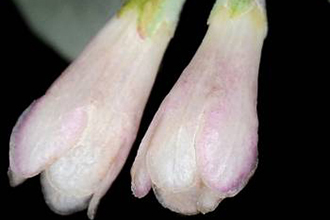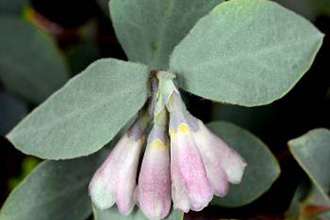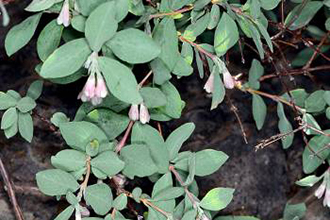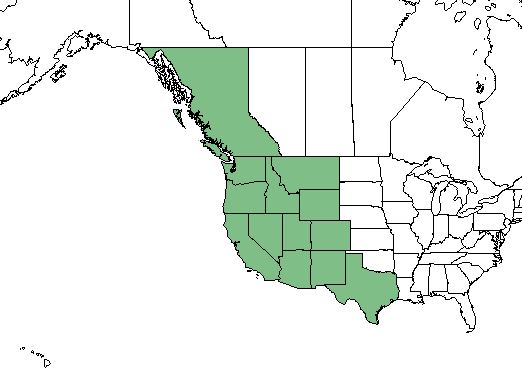Taxonomy: Kingdom - Plantae (plants). Subkingdom - Tracheobionta (vascular plants). Superdivision - Spermatophyta (seed plants). Division - Magnoliophyta (Flowering plants). Class - Magnoliopsida. Order - Dipsacales. Family - Caprifoliaceae(Honeysuckle family). Genus -Symphoricarpos Duham.. Species - Symphoricarpos oreophilus A. Gray
Ecology: Mountain snowberry (Symphoricarpos oreophilus) is a dominant shrub species in numerous nonforested and forested communities in the western United States. Habitat types using mountain snowberry as an indicator species have been identified within the Douglas-fir (Pseudotsuga menziesii), white fir (Abies concolor), ponderosa pine (Pinus ponderosa), subalpine fir (A. lasiocarpa), Gambel oak (Quercus gambelii), and quaking aspen (Populus tremuloides) series. Mountain snowberry also occurs within the pinyon-juniper (Pinus-Juniperus spp.) zone and is a dominant understory species within the quaking aspen type throughout the western mountains. It is a major component on open slopes in the mountain-brush zone, where it may form pure stands. The upper limits of mountain snowberry's elevational range extend into the subalpine zone.



